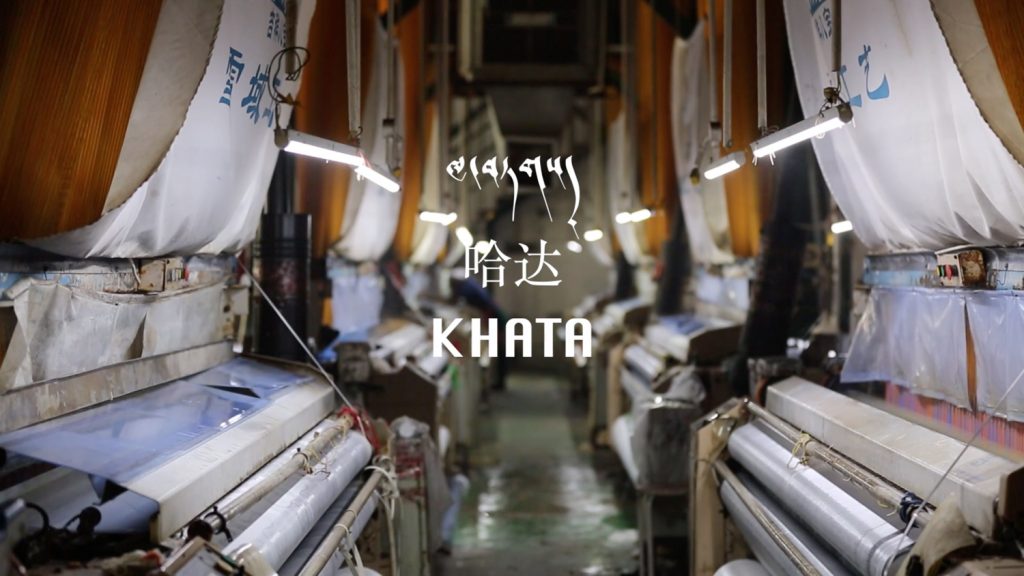If you’ve ever been to a Tibetan Buddhist temple, you’ve most definitely encountered khata. Usually, long white pieces of thin, almost wispy fabric, they’re presented to show appreciation or as a greeting, wrapped about religious statues, and burned in ceremonies.
But Tibetan anthropologist and filmmaker Huatse Gyal has been casting a new urgency on the environmental impact of the ubiquitous scarves. In addition to taking a closer look at their meaning and history, Gyal’s documentary film Khata: Purity or Poison? draws attention to the fact that khata are overwhelmingly made of polyester. Their excessive use has led to deleterious effects on the natural environment, and a perplexing religious conundrum: what happens when ceremonial objects are not only mass-produced but become harmful agents driving pollution?
Gyal is a professor of anthropology at Rice University who grew up in a nomadic pastoralist community in Tibet. In this interview, Gyal talks about how essential khata are to Tibetan communication, their role as symbolic connectors, and the paradox of sacred waste.
Let’s start simple: what are khata, and where can you find them in Tibetan spaces? Khata are ceremonial scarves that we traditionally offer to Buddhist teachers, or teachers in general, as a way of expressing our sincerity and gratitude, and our faith in the teachings. Buddhist lamas, elders, and people in higher positions, can also offer khata to younger people or people who are less senior, as a way to kind of “carry the blessing.” By offering a khata, you’re creating a connection between you and the recipient.
The physical procedure of offering a khata looks like this: person A places the khata over the shoulders of person B, while person B bows their head and keeps their hands together in a prayer position. Khata are also laid over religious statues, presented during school graduations, and even offered during political or business transactions. They’re also given to friends or loved ones when they leave or come back from a trip; it’s a way of saying “safe trip” or “be in good health.” Simply put, khata are everywhere.
Can you tell me a little bit about the history of khata? We actually don’t know that much about their history. In the film, I talk to the scholar Karma Delek, who’s at the School of Tibetan Texts, and he observes that the word “khata” doesn’t appear until around the year 1040. They’re also mentioned in the biography of Tsongkhapa (1357–1419), the founder of the Gelug school of Tibetan Buddhism, and in reference to the construction of the Jokhang by the Fifth Dalai Lama (1617–1682).
But if we look outside of the textual tradition, we find that khata have another origin story. Tibetan pastoralists have a long tradition of offering each other pieces of sheep’s wool before a long journey. According to some historians, khata later replaced this piece of sheep’s wool, and there came to be a wider culture of offering white cloth to people. Today, if you go to Tibet, India, Nepal, or Bhutan, khata are all over the place.
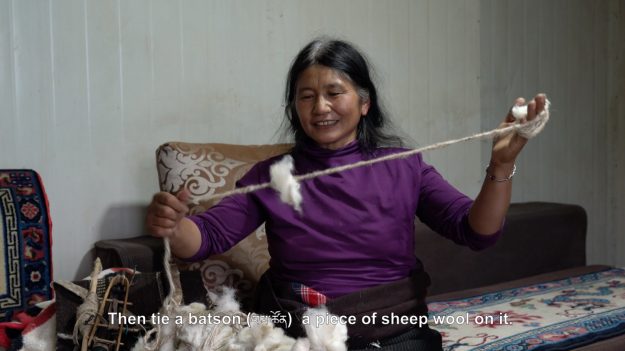
So at one point, based on the traditions of people living on the Tibetan Plateau, this exchange of a piece of sheep’s wool was adopted into Bon and larger Buddhist culture. Yes. Something I want to underscore is that, most likely, khata came out of an indigenous practice. Karma Delek notes the Buddhist textual significance of khata, but for me, it’s important to pay attention to how a preliminary version of khata was being used in early, indigenous Tibetan practices.
The reason I’m stressing this is because we tend to see Tibetan civilization primarily through the lens of texts—Tibetan Buddhist texts. Especially in the West, I think we often reduce Tibetan culture to texts. And there’s a lot of text, I’m aware of that. But the farmers and pastoralists have a long oral tradition of building localized relationships with the yaks and other animals, and developing particular relationships to their ancestral land that aren’t necessarily [privileged with the same spiritual authority.]
I think we have to see practices like the exchange of khata, and Tibetan civilization for that matter, within a larger context of relationships to the natural environment that predate the textual depictions of Tibetan Buddhist thought.
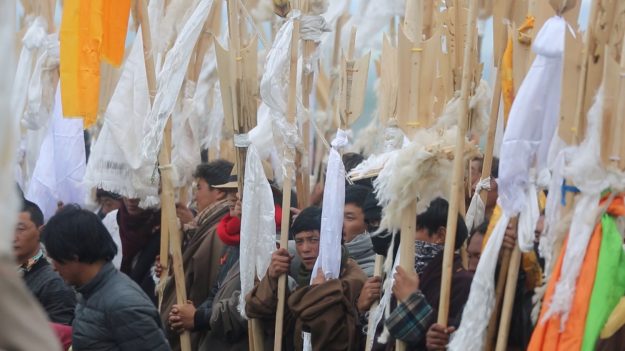
Everyone you interviewed in the film had a different definition for khata. Some said that they mean “peace,” or that the white color represents purity; others said it’s a reference to Tibet being a “snow land.” Are these meanings fairly representative? Yes, I think so. There is definitely a spectrum of interconnected meanings. Some Tibetans speak about the whiteness of khata representing “pure heart,” and others talk about how it’s a reference to snow. But in the Tibetan language, “snow” is often used as a kind of metaphorical shorthand for “pure heart,” so it’s hard to know how people are making that distinction in their minds. Khata are also, as I hinted at earlier, a symbolic connector of people.
Can you say more about their symbolism? Tibetan people use khata in order to communicate certain ideas. Let’s say you give a khata to your friend who is finishing their PhD and just defended their dissertation. Offering a khata is way more powerful than just saying, “Oh, congratulations, I sincerely wish you the best,” and so forth. The khata plays an essential role in communicating that sentiment. Khata also warm up relationships, so to speak—the ritual exchange marks this new space, a warm space, where you can have a discussion, or do what you need to do, and move on.
There’s also an aesthetic to it, right? The exchange makes this fleeting moment a bit more durable, a bit more visible. Sometimes material objects can be more potent than language.
Speaking of symbolism, in the film you speak with Zhi Xuewen, head of a Tibetan crafts company, who says that khata have actually created a “good bond” between the Tibetans and the Han Chinese. Is that something you hear a lot, or is that opinion pretty unique? I think that’s his own interpretation. It’s a beautiful idea, and a beautiful interpretation. However, I’m not sure if this is a common sentiment among Tibetans. That being said, more and more Chinese Buddhist followers of Tibetan teachers are using khata. If khata are considered “connectors”—one end connected to the recipient’s heart, and one connected to the person who’s offering—it’s natural to think that they would create this good bond.
These khata-made bonds don’t just form in Buddhist settings. Khata are offered at weddings, at karaoke bars. You see them being exchanged between government officials. Historically, khata have played a role in diplomacy between Tibetans, Mongols, and Chinese.
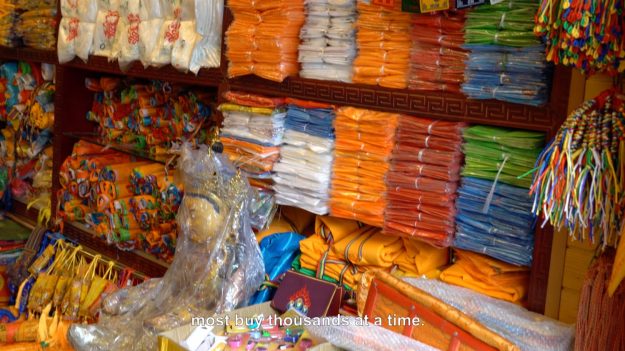
What are khata made of? Where are they manufactured? They were traditionally made of sheep’s wool or silk. Now, they’re overwhelmingly made of polyester, which is, of course, a completely synthetic material. Most of them are manufactured in a place called Ranyi Township, outside Chengdu, in southwest China. It’s a place that makes a lot of religious objects: statues, prayer flags, prayer wheels. The workers in the factories are Chinese—the owners too. Some have a history of making and selling khata; they’re generally part of the third generation of families doing that kind of business.
A Chinese town that depends on Tibetan culture for its livelihood—it upends a lot of the ideas we have about Tibetans being the passive recipients of modern development. Many of the factory owners express gratitude for Tibetan culture; there’s this sense that it’s been feeding their families. There’s an interesting interdependence there.
One more thing: the population in Ranyi is only about 30,000 people, but in 2019, according to a Chinese news report, this town produced more than 100 million khata.
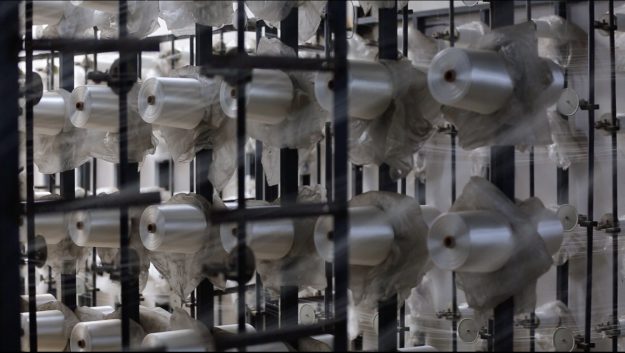
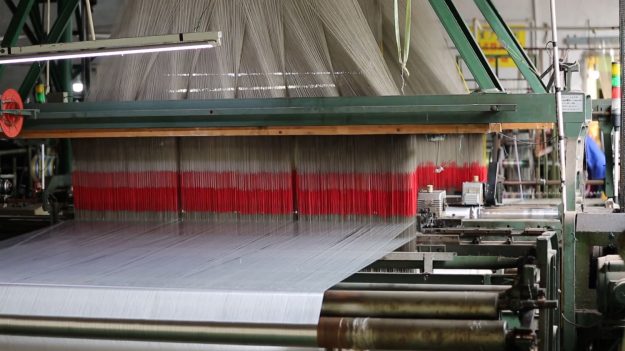
Wow. If that many khata are being produced, it’s not surprising that there would be an environmental issue. Yes. In general, Tibetans don’t reuse khata—there’s a cultural concept of “pollution” that is associated with used materials. This is known as gdon གདོན།, meaning that the used object can be possessed by a demon or harmful spirit that can bring illness to family members. Naturally, this deeply rooted cultural concept poses a hindrance to recycling khata. By the way, if you want to learn more about this, you can check out anthropologist Charlene Makley’s book The Battle for Fortune: State-Led Development, Personhood, and Power among Tibetans in China (2018).
At the same time, khata are polluting the environment. They pile up in trash cans, in the rooms of Buddhist monasteries; they get stuck in fences. Birds get their claws stuck in the threads. They clog lakes and rivers, killing fish when they unravel. Animals eat them—I’ve seen khata inside animal carcasses—and they get really hard and knotted in there; you can’t even cut them out of the belly of a cow. Moreover, they release toxic smoke when they’re burnt—and you can see them melt into a solid form—which happens during offerings. Sheep-shearers now use khata to tie the legs of sheep. They’re being used for all kinds of utilitarian purposes now.
What is this doing to the spiritual value of khata? Because khata are still, technically, “auspicious” objects, isn’t there a sense that more khata means more auspiciousness? That is true to some extent, but I think khata are on their way from the realm of sacredness to the realm of the ordinary. (I use the words sacred, auspicious, and ceremonial interchangeably to refer to the high status of khata in Tibetan culture.) The polyester material doesn’t help; before they were mass-produced, khata were harder to come by, so they elicited more appreciation. They were like the Buddha’s teaching—a precious jewel. There’s a deep logic in Tibetan culture that rare means precious, and now that khata are no longer rare, they’re no longer precious.
“I think we have to see practices like the exchange of khata, and Tibetan civilization for that matter, within a larger context of relationships to the natural environment that predate the textual depictions of Tibetan Buddhist thought.”
There’s a kind of double-consciousness. It seems like at least some Tibetans are aware of the negative consequences of polyester khata, but the understanding of them as objects of purity is also extremely strong. Right now, not many people are cognizant of the environmental impact, but that is changing.
There are many young Tibetan entrepreneurs, health workers, and cultural activists who are actively advocating for use of healthier raw material for khata. More and more Tibetans are increasingly aware of the negative impact of polyester khata on their culture, land, and bodies. My friend Tenpa Tarje runs a textile factory committed to making ecologically friendly khata out of sheep’s wool. The word “wool” is the same as “victory” in Tibetan, and it indicates good fortune. More importantly, sheep’s wool khata are essentially harmless to the environment. Tarje uses traditional methods and a Japanese technology that makes it easier to thread the wool.
He’s also an advocate for reducing the number of khata we use. If students switched back to offering just one khata per graduating class, for example, that one khata would take on way more meaning for the teacher. He’d be more likely to remember, “Ah, this khata is from the class of 2023,” and so forth.
What challenges do you foresee in changing people’s perspectives? Well, first, people have become accustomed to cheap, convenient, plastic khata. There’s also a tendency to try to make gestures more “spectacular” by giving massive amounts of khata.
Tibetan lamas are complicit in this, as well as in other forms of environmental damage: if they want to display their compassion spectacularly, they’ll often do this practice of buying 1,000 fish from the lowland area, bringing them back to the Tibetan region, and releasing them into the lakes. On one hand, the lamas are sparing those fish being eaten. But ecologists and experts know the real consequences: likely, the fish will die the next day because they can’t survive in different waters, or maybe the lamas just inadvertently introduced an invasive species that will harm other creatures.
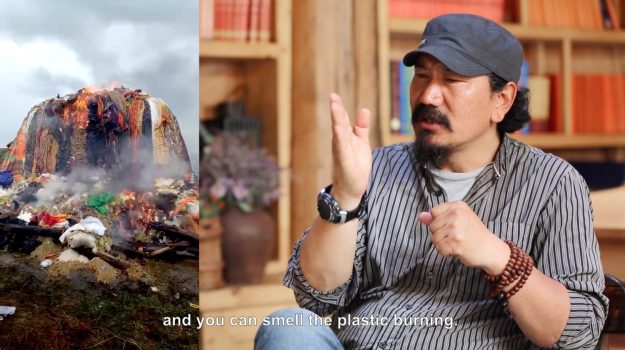
As long as Tibetans remain inclined toward this custom to make generous offerings, it’ll be difficult to change these behaviors. However, there are efforts to spread the word about health risks and harm. Health worker Chospal Zangpo talks about how burning khata creates a dioxin, a poisonous chemical, regarded as one of the leading causes of cancer by the WHO. He has a very influential WeChat account that reaches at least half a million people. So there are conversations happening. People are starting to raise their concerns. I’m hopeful, because the silence surrounding these issues has contributed to their violence.
Buddhist teachers should play a more active role in raising awareness since their words carry more weight than anyone else’s. But as I mentioned before, they are often complicit in the sense that they welcome the thousands of khata being offered to them. Monasteries have yet to come up with a good system of reusing khata; they end up just dumping them. It’s hard. People are offering khata sincerely, but they immediately become trash.
“Many of my anthropology students come from different cultural backgrounds. I stress that we don’t need to go all the way to some far-flung area: we can do research in our own communities.”
How did you become interested in khata? I was born and raised in a Tibetan nomadic family. As I trained as an anthropologist, I quickly realized how much I took for granted, how I didn’t ask enough questions. I thought, “OK, I need to find a way to make the familiar strange.” Looking at khata is that kind of exercise. Many of my anthropology students come from different cultural backgrounds. I stress that we don’t need to go all the way to some far-flung area: we can do research in our own communities.
In my academic work, I’m indebted to books like Buddhism and Waste. As I said before, people looking at Tibet tend to privilege the texts—obviously, this applies to the academic world too. I made a film about khata because I want to explore this privileging of text over other mediums in academia. What can a film do that an article can’t, and vice versa?
Watching it, I really did think that a film was an apt way to hint at how impossible it is to pinpoint the precise cultural meaning of khata. Showing them—rather than relying solely on the words of your interviewees, or quoting a Tibetan text—felt like a powerful way to get at what they mean. Khata capture a wide range of human experiences: gratitude, faith, friendship, sincerity. These days, we’re seeing pollution, destruction, ignorance. In a sense, the power of khata comes from the fact that we can’t arrive at a simple definition.
Thank you for subscribing to Tricycle! As a nonprofit, we depend on readers like you to keep Buddhist teachings and practices widely available.

